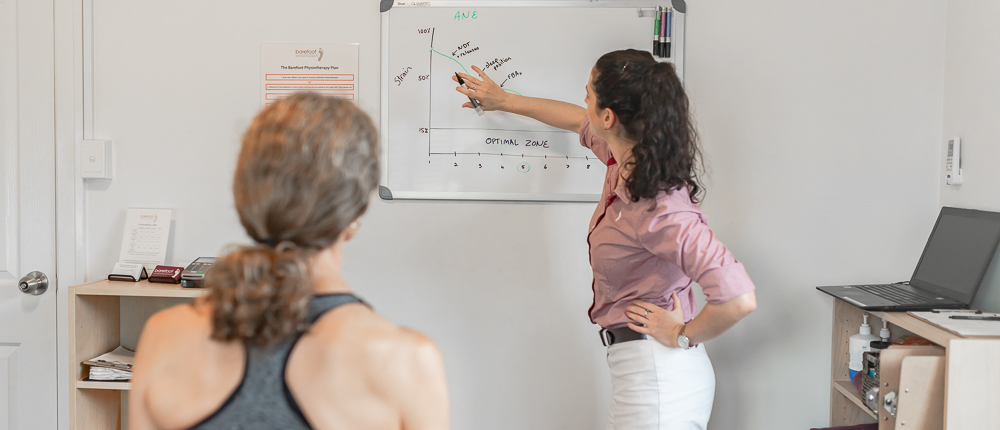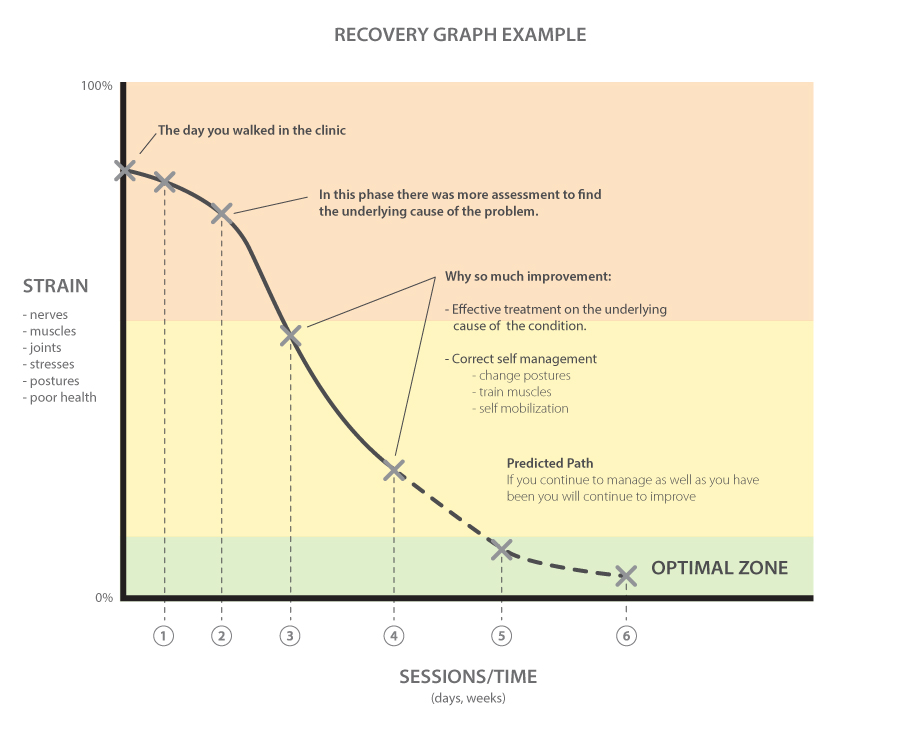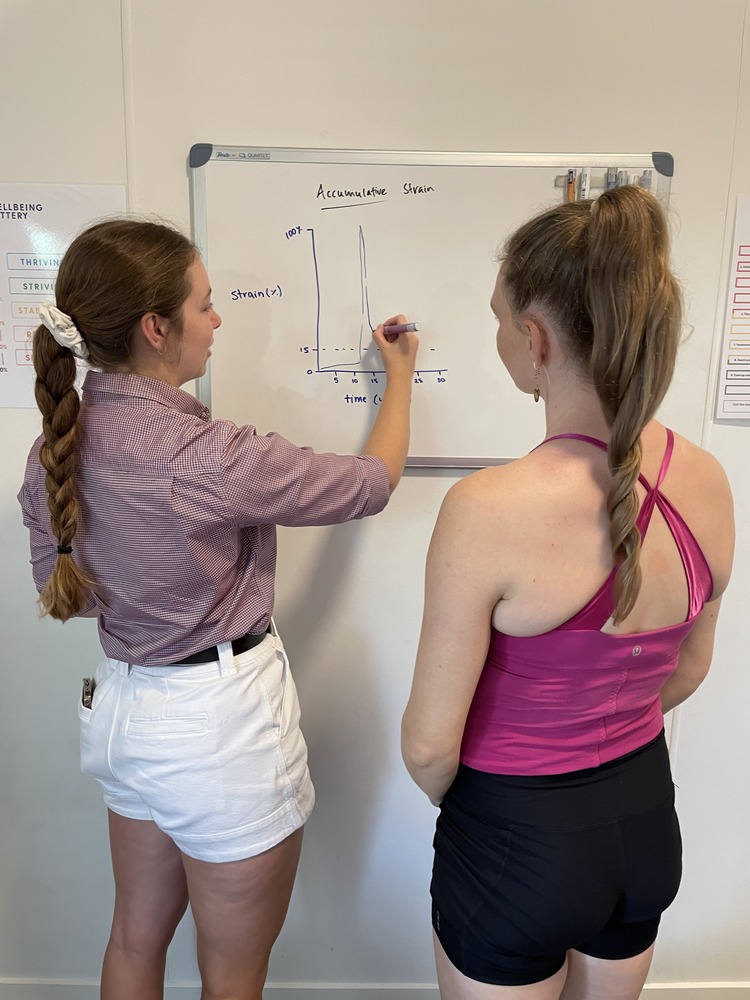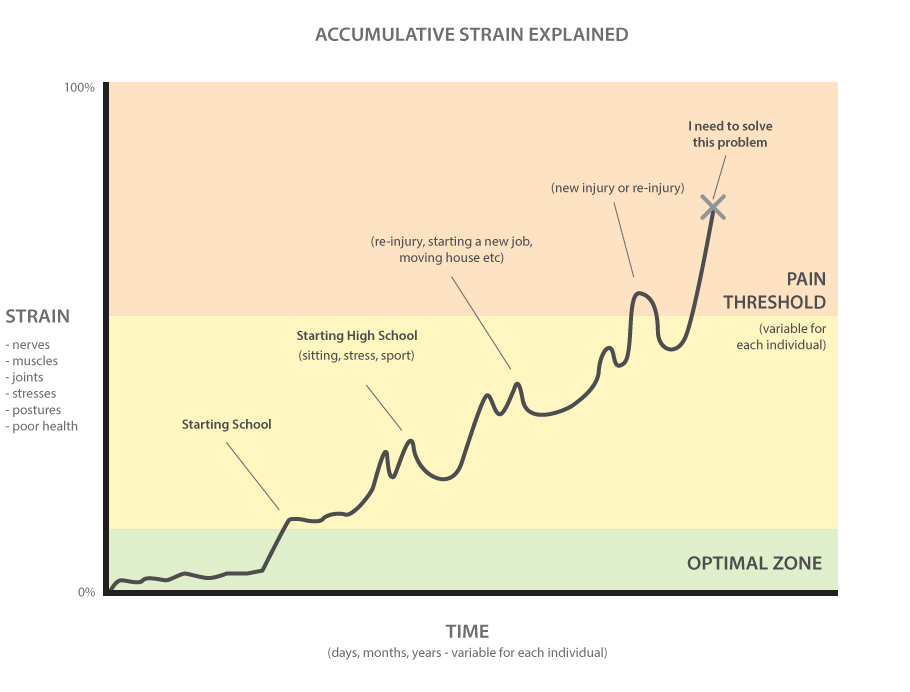What is Accumulative Strain?
Strain on our body can be:
- Tight muscles
- Stiff joints
- Irritated nerves
- Stressful/Emotional load on our brain (anxiety, worry, depression)
- General Health issues (immune system, endocrine/hormonal systems, infections, illness)
How can Accumulative Strain build up in our body?
- Postural load
- Sports technique
- Previous Injury
- Poor footwear
- Lack of sleep
- Unbalanced lifestyle
- Non-Musculoskeletal influences on the body

Is there Non-Accumulative Strain?
An example of Non-Accumulative strain would be a sudden traumatic injury. Consider sustaining a neck injury from a car accident without having any previous neck issues or being tackled in a rugby game and rolling your ankle.
What can I do to limit Accumulative Strain?
- Improve your posture. Become aware of how you hold yourself when you are at work, on the couch at home, driving in your car, or standing at a bar having a drink. These are all places where you could be building up small amounts of strain in your body, that will eventually build up to be something bigger.
- Set your workstation up best for YOU.
- Ensure you are as fit and strong as you can be for the activities you do. Whether it be running around the touch field, getting bossed around at Bootcamp or giving your garden a bit of flare, these are all activities that can be performed better with strong muscles and good posture/technique.
- Be smart about your footwear. Try to buy the right shoes for your feet and the specific activities that you do. Don’t sacrifice your body for fashion!
- Getting enough sleep. Sleep is essential for brain development and cell recovery. We all know how hard it is to function when we haven’t had enough sleep – Our memory is worse, we feel groggy and we often get grumpy. Getting a good night’s sleep will help with your level of alertness, your mood and sports performance.
- Lead a Balanced Lifestyle. Try to take time out to do the things you enjoy often. Working too much or feeling stressed can have negative effects on your body & your health. We encourage a Barefoot Lifestyle!
- See a Barefoot Physiotherapist. To work out if strain is building up in your body that would eventually become an issue, we can do a thorough assessment of your nerves, muscles, joints and postures. You do not need to have symptoms to have an assessment. It is a positive step towards injury prevention.

The Recovery Graph
Once we have found the underlying cause of the problem we can create YOUR recovery graph. Each client’s recovery is different based on a few factors (severity of strain, amount of neural involvement, commitment to self management, unknown factors, factors out of your control). The benefit creating your recovery graph is that we can work out how many sessions you require to meet your goals.
Here is an example of a client’s recovery graph.







